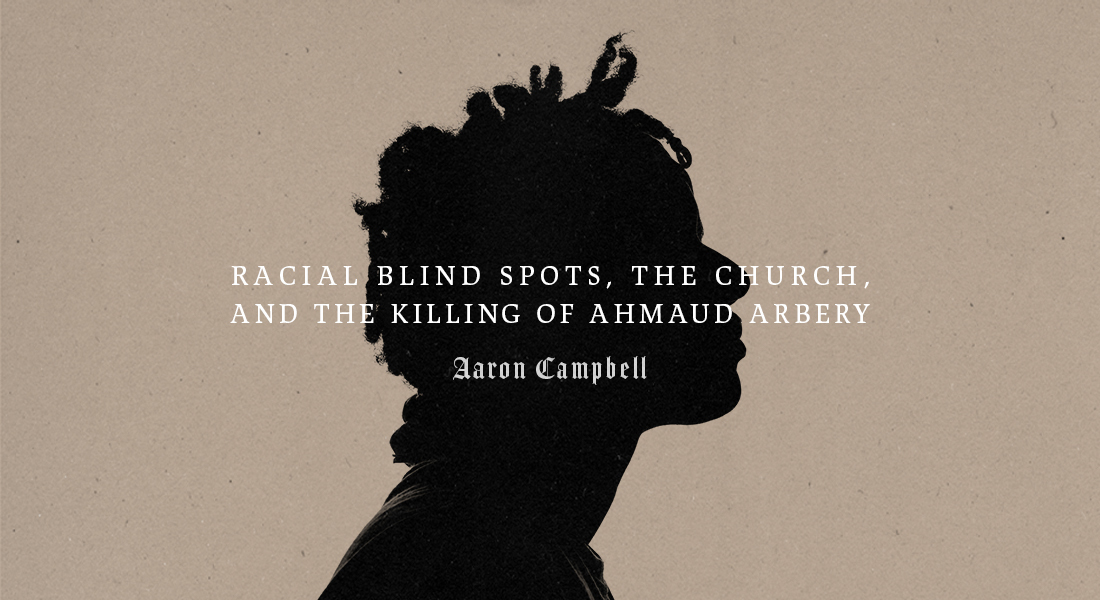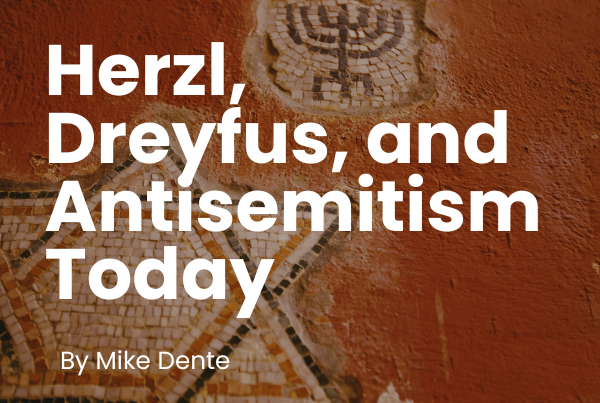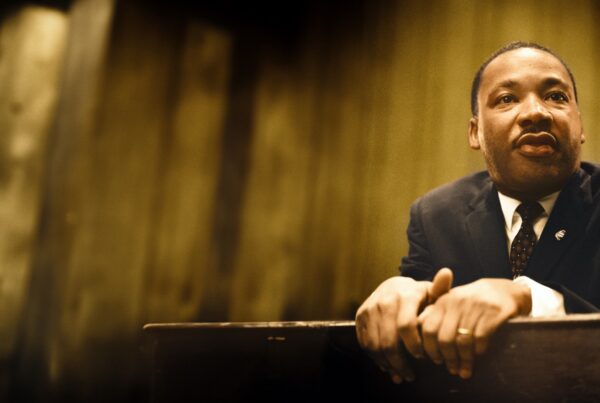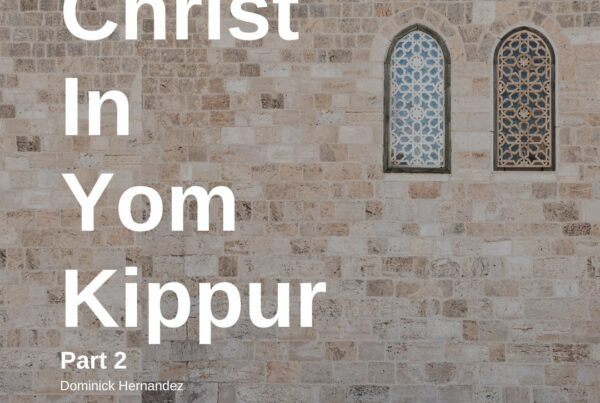
“We repeat the mistake continuously in this country of trying to address our racial animus and the violence it fosters as though it were a virus that occasionally attacks our social body, rather than seeing the truth: that racial animus is a constituting reality of our social body.”
—Willie James Jennings, Theologian “Overcoming Racial Faith.”
Did Jesus really rebuke James and John, two of his disciples, for their blatant bigoted behavior (Luke 9:52-56)? Did the Apostle Paul rebuke Peter, the very disciple whom Jesus gave the “keys of the church,” for hindering Gospel change to the ethnic status quo (Galatians 2:11-14)? So we see that even Peter, James, and John—the pillars of the early Church, and among the most “anointed” men in church history—needed correction to address their blind spots.
I write this article as one blowing a trumpet, but not to make music or even a call to arms. I write as one sounding the shofar. I write as the blast of the ram’s horns of old that brought down the mighty walls of Jericho. Indeed, in today’s racially-turbulent climate, our society has some age-old walls that need toppling. The “American Church” (meaning the Church as it originated with the European colonizers and extending to this present day) has some of these same old walls. To fully understand the implications of Ahmaud Arbery’s cold-blooded murder by two white men in Georgia, we as the Church must first reconcile with the Church’s seeming indifference to racial inequalities.
A Modern Parable
If a picture is worth a thousand words and a story is worth a thousand images, perhaps a modern-day parable will be helpful (but as a spoiler-alert, you will need to see Christ and the Bible in every word and action of this parable). Let us begin with a sweet, sage elderly white brother in the faith, and he’s sharing with a bright and eager, young black brother. He’s expositing the Scriptures—but wait!—upon closer examination, he’s actually expositing the Scriptures on the real Old-Testament economy of indentured servitude, which condemns (not justifies) American slavery and its blasphemous atrocities. He explains how the Bible declared such horrors to be a capital offense, from “men-stealing”—kidnapping, buying and selling human life (Exodus 21:16)—to the torture and murder of blacks and natives. He explains how God forbade the Israelites from entering into the capture and sale of human life, contrasting the Philistines and Phoenicians of their day.
The elder tells the younger that, for love’s sake, he’d rather him hear such a correct exegesis from him as a white man. Because by doing so, he is redeeming truth from century-old lies. Further, he is demonstrating (faith without works being dead) how as Christians, God commands us to put ourselves in others’ shoes (Leviticus 19:34)— experientially, culturally, and even racially—to “weep with those who weep” (Romans 12:15) while always going the “extra mile.” (Matthew 5:41) He tells him that biblical Christianity is hardly for the lazy in heart, but that when it comes to this day’s race issues and evils of the past, the Church has been more than just lazy. He tells him, “Failure to acknowledge and learn from the past creates blind spots in the present—and the thing about a blind spot is that you don’t even realize you have one.”
Perverting the Gospel
But wait—this elderly brother is hardly finished. Because not only does he want the young man to interpret Scripture adeptly, but he also wants him to adeptly apply Scripture to all of American Church history. “Let God be true and every man a liar,” he reverently quotes from the book of Romans. So he moves on to share another grave error of the American Church in regards to race: When sharing Christ with the Native-Americans (or, First Nation’s people), the Church gave natives an “accursed and perverted” Galatians-based Gospel (Galatians 1:6-7). The only difference was that instead of teaching the heresy of “Christ and circumcision,” they taught natives the heresy of “Christ and whiteness.” I.e., that true Christian sanctification and spiritual growth looked like becoming a white person in worldview, customs, and culture. Thus, long hair, drums, regalia, and native languages—ironically, even the very Navajo language that was later used by our government to “save the day” against Japan during World War II—was automatically considered pagan.
The elderly brother impresses upon the young brother the importance of sharing these truths. Because despite the assertions of some that “the past is the past” or “that was then, this is now,” the fact remains that countless blacks and natives (and even some whites) still reject the Church because of these major misrepresentations of Christ and His kingdom. He says that “if the Church doesn’t try to reconcile and repair these gross failings from the past, and doesn’t take the time to listen and learn moving forward, we will always continue operating from a position of blind ‘whiteness.’”
Concluding their fellowship, the two brothers hug and pray together. The young brother thanks the elderly brother for his love, time, and especially his humility, promising that he’ll never forget how much he saw the face of Jesus in his heart and example. The elderly brother gives all the credit to the Scriptures, knowing that sharing such things is necessary. He also recognizes that he is still very much a student himself when it comes to navigating race issues (even though he’s been on many missions trips to Africa and has multiracial grandkids). That being said, before they part, the elder asks the young brother how he can do better when it comes to dealing with race in America—both for his own personal growth as well as the growth of the local Church where he serves on leadership.
Agents of Change
“Well, since you asked…,” the young brother smiles and begins. “I would say that if the mainstream Church, and especially its church leadership, truly want to progress in racial awareness, it must make engaged-listening a lifestyle, not just something you occasionally do. Simply having that one deep race conversation you had last year, or reading that one good book, or watching that one piercing documentary about race isn’t enough. It requires being taught on an ongoing basis because most people would be embarrassed to realize how little they know about real American history. It also requires asking lots of hard questions—and even asking oneself lots of hard questions.”
With that, the elder brother nods in grateful agreement. Finally, both men walk away, more equipped than ever to be “salty” agents of change in today’s volatile, racial climate. Soli Deo Gloria, as this type of honest, humble, and loving interaction fulfills one of the last requests of a sweat-and-blood-soaked Savior in a garden as He prayed for the “oneness” of His beloved Church (John 17:20-22).
A Major Disparity
Now, at this point, if I were to ask the readers—by a showing of hands—how many feel that the interaction in this parable must become a vital reality across the American Church, there would no doubt be myriads of raised hands. Conversely, if I were to ask if any felt that, while the parable might be touching, its subject isn’t an urgent action item (of comparable priority to preaching the Gospel, theological accuracy, or teaching the full counsel of God), the raised hands would be innumerous. But alas, therein lies the heart of the problem! While there would be countless hands raised for both questions, sadly, the overwhelming majority of “vital reality” hands would be from the minority folks, and the vast majority of “not an urgent action item” hands would be from the white folks.
This disparity explains why much of the mainstream Church is silent from its pulpits (and innumerable published books) when it comes to race and modern-day injustices. Whether this silence is the result of passivity, procrastination, indifference, or neglect, the silence of the Church perpetuates the age-old status quo—and its age-old walls. It leads to the continued bolstering of the “racial architecture” of the American Church, as described by theologian Willie James Jennings, in his article, “Overcoming Racial Faith.” In the article, Jennings discusses what he refers to as a “Principality of Whiteness” in the Church, and defines it as, “Whiteness [that] instigates patterns of thinking and ways of being that invite multiple people(s) to imagine their worlds through white bodies.” He shares how this “principality” is the subconscious ideal in the American Church, going all the way back to its Renaissance-inspired inception. And to this day, it is this idea that makes the final decision on what it means to be ethnically diverse, what it means to be racially sensitive, and even what it means to have multiracial-expression at a church conference. As a result, this “Principality of Whiteness” continues to leave scores of voiceless, heavy-hearted Christian minorities feeling neglected by the mainstream Christian status quo. Is it any wonder that The New York Times recently wrote a story on the growing number of disgruntled African-Americans joining the “exodus” from the mainstream American Church? This is also hardly a “good witness” to the onlooking world.
A Racial Architecture
When we say the American Church has inherited a racial architecture, this is precisely the way “leaven” (or yeast) works—quietly working beneath the surface and ever “rising” as if without permission. From slaves being required to pledge that they would never seek their personal freedom as a condition to being water baptized, to one of America’s greatest evangelists, George Whitefield, personally owning slaves, to Billy Graham preaching to segregated audiences without a word about it from the pulpit. Most Christians don’t know the atrocious witness of these facts because they’re never mentioned or researched, and they’re never redressed with the healing “balm of Gilead.” The Church continues to act as if it’s just another “normal day” in the American saga.
Saying that the American Church has a racial architecture is not an insult. Rather, it’s an observation based on an objective view of the past to furnish an informed, unbiased view of the present. For in the words of sociologist Dr. Robin DiAngelo in her book White Fragility, “White people in North America live in a society that is deeply separate and unequal by race, and white people are the beneficiaries of that separation and inequality. As a result, we are insulated from racial stress.”
Historic Leadership
The Church was pivotal in the creation of many systems that form the backbone of our American culture: from educational, health care, and social services; the Church has led the way for centuries. At present, however, on matters of racial inequities, the Church has not been leading. In fact, rather than dissecting and confronting America’s race issues and its accompanying present-day systemic ills and injustices (i.e., institutional racism), the Church seems to run from them. Issues such as employment discrimination and wage inequalities, educational discrimination, biased laws and policing practices, mass incarceration, the “school to prison pipeline,” historical omissions, media bias, and more, continue to exist.
Today’s American Church needs a real “Reformation” of its Gospel position and practice on race and inequality. And I’m not talking about a “social Gospel.” Instead, I am talking about the “Jude 3,” old-school faith that was once delivered to the saints. I am talking about the very marrow of Ephesians 2. Most of all, the same beauty and brawn which Jesus proclaimed from scrolls of Isaiah in that Capernaum synagogue at the beginning of His public ministry. More so, along with this needed reformation, we also need white brothers and sisters to start emerging with prophetic voices on this topic—one that’s been ignored long enough (to our own hurt).
Finding A Prophetic Voice
Imagine if the Church’s minority brothers and sisters didn’t even need to publish articles on the next unjust killing of a minority person, because a white brother or sister already responded. And not just a response from a place of sincere empathy, but one that prophetically challenged and enjoined the Body of Christ—and the onlooking world—so powerfully, that a minority brother or sister could rejoice and exclaim, “Wow, it’s like the words were taken right from my mouth!” You see, I believe that type of blessed scenario would encapsulate the very kind of love Jesus was referring to when He shared how the world would know that we are His true followers (John 13:35).
• • •
Loaded Phrases
In 21st century America, we have acquired a new batch of “loaded phrases.” While it may come as a surprise to some, many are the names of deceased, unarmed black people: Staten Island’s “Eric Garner” (e.g., “I can’t breathe”); Cleveland’s twelve-year-old “Tamir Rice” (e.g., toy gun in the park); Miami Gardens’ “Trayvon Martin”; Dallas’ “Botham Jean” (e.g., the “mistaken apartment”); Baltimore’s “Freddie Gray”; Texas’ “Sandra Bland”, and others. Then, of course, there is “Ahmaud Arbery.”
You see, “Ahmaud Arbery,” being a loaded phrase explains why two people can be talking about his murder, but have two totally different ideas of what constitutes a “fruitful discussion” about it. It explains why his murder can make someone so unspeakably irate about why people need to know what Arbery was doing in that new construction home before he was killed: as if there is any justification for two armed civilians stalking an unarmed man for four minutes before shooting him dead! The reality is, it doesn’t matter what he was doing— nothing granted those men the right to be judge, jury, and executioner. “Ahmaud Arbery,” being a loaded phrase is why it grieves minority Christians when they have to explain to other Christians that there is a real, biblical place for righteous, un-sinful anger (Ephesian 4:26)—the very anger Jesus exemplified when necessary (Mark 3:5).
Revisiting the Past
“Arbery,” being a loaded phrase, is why I suddenly find myself forced to reflect on the times when my own hands have been placed on the hood of a police car, strictly due to racial profiling. This is why I am forced to reflect on the racism I have faced throughout my life. It causes me to revisit the racist backlash I once received from both classmates and the administration at my predominantly-white prep school when I was one of the first people of color (if not the first) in the school’s long and cherished history to be admitted into an Ivy-League university.
Picturing those white men plotting against Arbery even makes me reflect on “Old Man Chauncey,” the white slave master who raped and impregnated one of my native great-grandmothers who was his indentured servant—only for his own son to later on rape the offspring from that first rape (yes, his very own “half-sister.”) To this day, the main road that cuts through my family’s North Carolina community is called “Chauncey Town Road.”
Arbery makes me revisit my own father’s life growing up as a poor farm boy in the South, attending substandard, “separate but equal” Jim Crow schools until he moved North for college. As the valedictorian of his class, my Dad’s dream was to be a nuclear physicist; that is, until he wrote his “A+” paper on the subject in high school. His efforts resulted in an “F”. When he asked his white science teacher why, the teacher told him, “I gave you an ‘F’ because a person of color has no business wanting to be a nuclear physicist.”
“Arbery,” being a loaded phrase, is why minorities begin “unloading” (seemingly all over again) their own racist experiences; countless day-to-day stories like mine, and countless generational histories like mine that society continues to turn a blind eye toward. All of this combined is why Christian minorities are growing more frustrated with the mainstream Church’s deafening silence (e.g., the aforementioned New York Times article).
Against the Grain
Personally, I believe that I am called to the “mainstream” Church because, despite these issues, we are still one in Christ. And we have been called to “endeavor” for true unity at all costs (Ephesians 4:2; Psalm 133). However, I remain keenly aware that when I wear my native regalia to other churches or conferences, or when I wear my most comfortable “urban” clothing (Timberland boots, a hoodie, and a black skully hat) I am “going against the grain.” But the questions that we should ask are, “What is the grain?” And “Who made the grain?” And “Why is everything still seemingly subjected to the grain?”
I even recall a time when I observed a white teacher at a Christian school use a horrendously racist statement toward a minority student. When I gently urged the man who ran the school, a fellow (albeit white) pastor, to challenge her about her remark, he responded that I was “out of place.” But what about the student? What did Jesus say about causing any of his children to stumble in the faith? Again, why is everything still seemingly subjected to “the grain?”
Seeking Racial Understanding
Here is something to consider: If the mainstream Protestant Church took all the effort it puts into studying leadership skills and growth models, Sunday school curriculums, and eschatology, and put 50% of said effort into researching Gospel love, repentance, and redemption with regard to race—we might actually begin to look like the Church in the book of Acts. Or what if the Church started taking even 50% of the budget that it puts into its Resurrection Sunday services and men’s and women’s conferences and putting it into “Gospel and Race” symposiums and workshops? Or if the Church began including America’s neglected minority-based, low-income neighborhoods and native reservations among their church mission trips—with mandatory cultural workshops beforehand (instead of always traveling to every other corner of the planet)? Who knows? Our blood-soiled land might see the type of revival everyone has been praying for.
However, addressing these things will come with a price. You may do so at the risk of losing your popularity, or not being invited to speak at certain churches or conferences. Are we willing to make that sacrifice? It’s time we start asking ourselves what it looks like to be a true disciple of Jesus when it comes to the Gospel and race matters. Isn’t thinking and acting more like Jesus what this is all about? Ultimately, there really is only one voice from God on this matter, as the Holy Spirit never contradicts Himself.
Conclusion
Ahmaud Arbery’s tragic death should not be glossed over by the Church. We must remember that we have been given “the two greatest commandments” by our Lord: to love the Lord our God and to love our neighbor as we love ourselves. Based on Christ’s further teaching, Ahmaud Arbery’s mother is our “neighbor.” His father is our “neighbor.” His close friends and family and community are our “neighbors.” When these tragedies happen, we need to care about people—not just doctrinal positions, as that is the very Pharisee-ism that Jesus found repugnant. We need to ask God to give us tears. We need to weep alongside a sonless mother, weep alongside a bereaved family. We need to weep for a calloused nation that not only permits institutional racism but also profits from it in many sectors. Let us care enough to speak out against injustice and begin educating those who look to us, the Church, for answers. It’s what God has called us to do. It’s what the Bible spells out clearly.
Honestly, this would be the same type of biblical relevance that made this once anti-Christian, militant-minded, hyper-racially-charged agnostic finally bow my heart to the wisdom of Scripture and the soul-saving Gospel of Christ. Let’s not waste this chance to be used by God for change.
• • •
Afterword
As I write this article, I am surrounded by a pile of books on my desk that I have either read, critiqued, reread, or am working through reading: “White Fragility,” by Robin DiAngelo (lecture by author on YouTube); “Lies My Teacher Told Me,” by James Loewen; “The New Jim Crow”, by Michelle Alexander; “The Color of Law,” by Richard Rothstein (lecture by author on YouTube); “The Christian Imagination: Theology And Origins of Race,” by Willie James Jennings; “Let Justice Roll Down,” by John Perkins; “Mañana: Christian Theology From A Hispanic Perspective,” by Justo Gonzalez; “Bloodlines: Race, Cross, and the Christian,” by John Piper.
As I write this article, I am also surrounded by many close brothers and sisters—white, black, Hispanic, and native—who have listened to my heart, added to this article their insightful feedback, and prayed for me along the way. They have also prayed for those who would read this piece. So let us begin the conversation. I make myself available for discussion, along with the leadership of Calvary Global Network—a multiracial band of men who have started discussing such topics. A group who listens to one another, who sighs together, and who prays together into the midnight hours.









